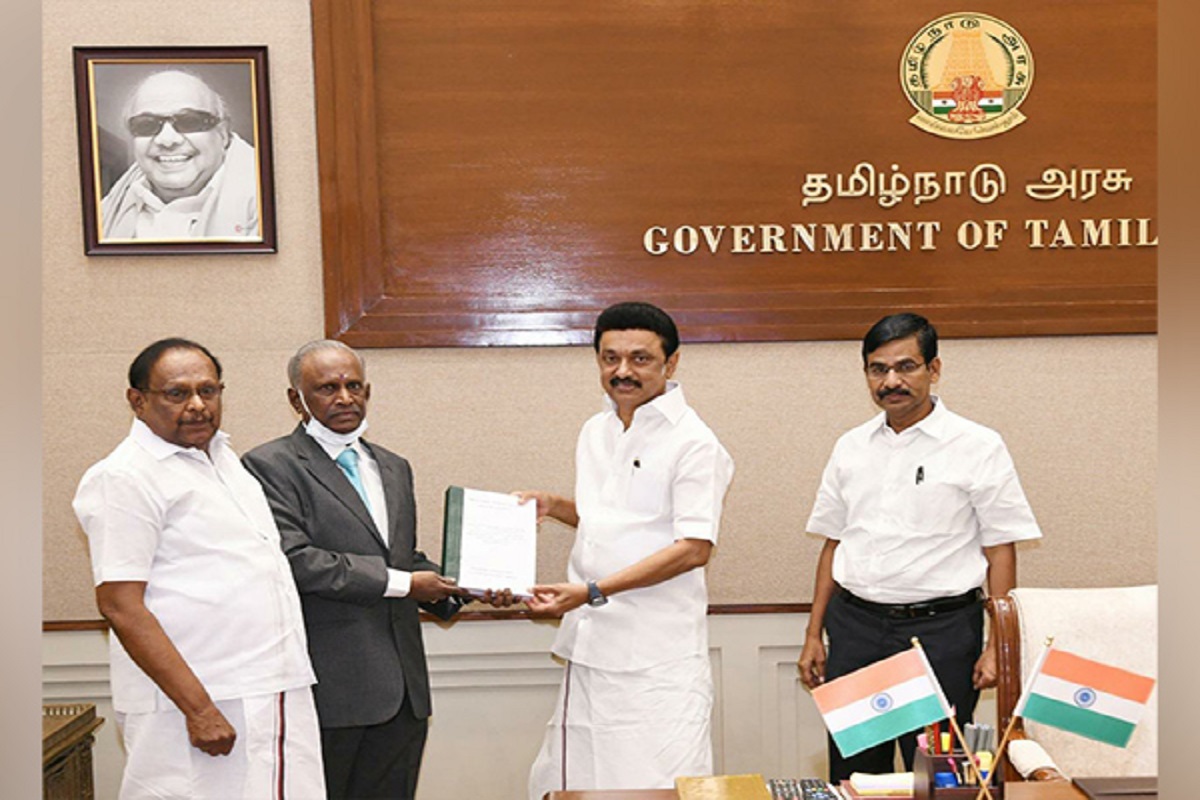The report of Arumugasamy Commission on the death of former chief minister of Tamil Nadu, J Jayalalithaa has created a storm in Tamil Nadu soon after it was tabled in the State Assembly on Tuesday. Jayalalithaa died on December 5, 2016.
Raising doubts over the medical treatment given to former chief minister, the Commission has recommended further probe against her aide Sasikala Natarajan, the then health minister C Vijayabhaskar, Dr. KS Sivakumar, of Apollo Hospitals, Dr J Radhakrishnan, former health secretary, former chief secretary P Rama Mohana Rao, among others, for what it called as “lapses”.
Advertisement
The report has come as a huge embarrassment to the AIADMK which was then in power as it is charged with concealing vital information relating to treatment, and even altering date and time of death, while turning down suggestions for treatment abroad.
However, the 500-page report in English (608 pages in Tamil) report, which was handed over to Tamil Nadu Chief Minister M K Stalin on August 27, 2022, raises more questions than answers.
The report by a retired judge of the Madras High Court includes two parts, Jayalalithaa’s admission to the Apollo Hospital on September 22, 2016 for treatment, and factors such as her illness, habits and other personal details relevant to her health and illness.
Jayalalithaa died at the hospital after 75 days of treatment. The Commission was set up in November 2017 and heard over 150 witnesses. A thorough investigation into the death was one of the promises made by the DMK during the last Assembly polls in April 2021.
The AIADMK government had maintained all along that the best possible treatment was given to Jayalalithaa as certified by the Apollo Hospitals and the AIIMS team which came to Chennai to examine Jayalalithaa. However, the Commission has raised questions about why angio or surgery was not conducted, and why was a secrecy maintained about the treatment soon after Jayalalithaa’s hospitalisation.
The Commission has said that even the date and time of death had been altered from around 3 p.m. on December 4 to 11.30 p.m. on December 5, 2016.
The Commission report refers to strains in the relationship between Jayalalithaa and Sasikala after 2012 when the latter was asked to leave the then chief minister’s Poes Garden residence for a brief period.
The report questioned why she was not taken abroad for treatment and why angio was not performed despite her heart condition.
The report has placed the AIADMK in the doubt as it raised doubts about the efficacy of the treatment given to Jayalalithaa by those running the AIADMK government in her absence, particularly the then health minister Vijayabhaskar, considered close to former chief minister Edappadi Palaniswamy (EPS) who had got himself appointed as interim general secretary of the AIADMK.
Palaniswamy also dismissed former CM O Panneerselvam (OPS) from the party. EPS also blocked several attempts of Sasikala to return to the AIADMK after having been ousted in 2017. The differences between EPS and Sasikala on the one hand and between the EPS and OPS groups on the other could have ramifications in the wake of the Commission report.
The state government is bound to take a follow-up action on the report and announce further probe as recommended by the Commission. This could cause further upheavals in the AIADMK.
No section of the AIADMK can be happy with the report of the Commission as it has questioned certain actions of the then health minister in the EPS camp, OPS himself over his demand for a probe into Jayalalithaa’s death after his Dharmayudh against Sasikala in early 2017, as also the treatment provided by Apollo Hospitals.
A further twist in the story is the assertion of the Apollo Hospitals that the Commission was biased against the hospital group. The stand of the hospital group was vindicated by the AIIMS report which claimed the treatment provided to Jayalalithaa could not be faulted.
The hospital had even approached the Supreme Court against what it called unfair remarks made against the hospital by the Commission during its proceedings.
Overall, confusion abounds on the path to be chosen by the State government in view of conflicting opinions and versions.











